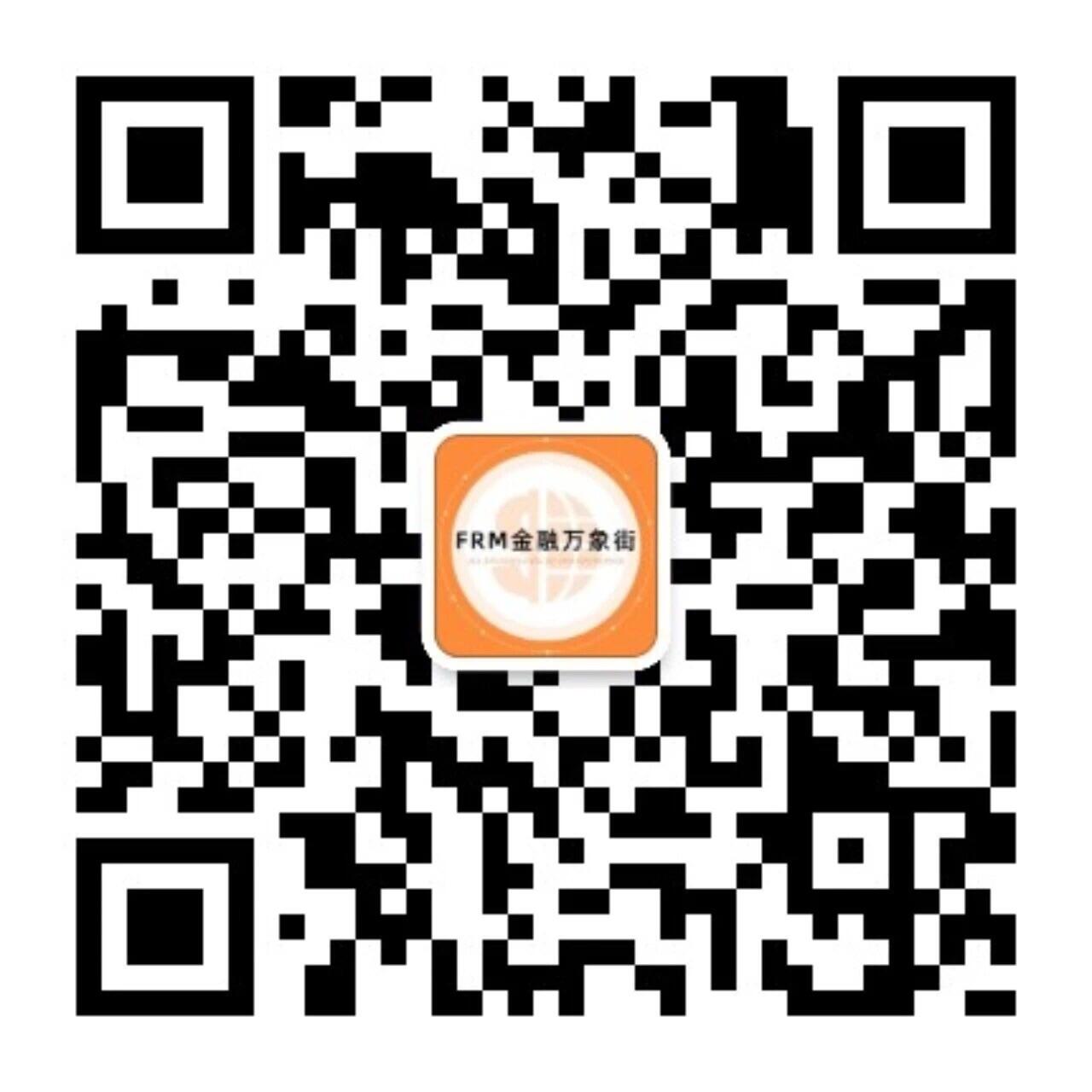

1、凡本网站注明“来源高顿教育”或“来源高顿网校”或“来源高顿”,的所有作品,均为本网站合法拥有版权的作品,未经本网站授权,任何媒体、网站、个人不得转载、链接、转帖或以其他方式使用。
2、经本网站合法授权的,应在授权范围内使用,且使用时必须注明“来源高顿网校”或“来源高顿”,并不得对作品中出现的“高顿”字样进行删减、替换等。违反上述声明者,本网站将依法追究其法律责任。
3、本网站的部分资料转载自互联网,均尽力标明作者和出处。本网站转载的目的在于传递更多信息,并不意味着赞同其观点或证实其描述,本网站不对其真实性负责。
4、如您认为本网站刊载作品涉及版权等问题,请与本网站联系(邮箱fawu@gaodun.com,电话:021-31587497),本网站核实确认后会尽快予以处理。
FRM考试题型有哪些?都是选择题吗?FRM考试分为一二级,在金融行业含金量很高,不少人把FRM证书当做金融金融行业的敲门砖,FRM报名条件没有任何限制,...
2022-11-07FRM考试计算题难度大吗?要如何练习FRM计算题?FRM是金融风险管理师考试虽然是金融行业的考试,但其中也涉及了大量的计算题,毕竟金融和数学在大多数...
2022-10-24FRM考试复习教材有哪些?FRM考试题型有哪些?FRM报名正在进行中,有很多同学还在犹豫,这是今年的最后一次报名时间了,如果错过了这次就等到明年了,...
2022-10-19FRMPractice Exam在哪里下载?考前刷题有哪些好处?备考任何考试的时候,都少不了重要的一步就是刷题,刷题还有一个好处就是可以随自己近阶段的一个知识...
2022-10-18FRM考试在所有的金融专业考试当中并不算简单的考试,但是其证书还是很受青睐的。 那么FRM试卷是什么类型?本文高顿cici学姐就带大家来了解下!...
2022-10-08FRM金融风险管理师在我国风险管理领域倍受认可,并且也是一项国际性金融证书。 那么FRM一级题型都有什么呢?本文高顿cici学姐就带大家来看一下!...
2022-10-08FRM考试其实一直都是金融领域当中一个受到热烈青睐的考试,每年通过考试拿下考试的人数也不少。 那么FRM题型有什么?本文高顿cici学姐就带大家来了解...
2022-09-29FRM考试相比其他金融考试还是相当受欢迎的,因为FRM金融风险管理证书在风控领域占据着重要的位置。 那么FRM一级真题怎么找呢?本文高顿cici学姐就带大...
2022-09-29FRM考试很多金融专业的学生相比都听说过,而且FRM考试又不限制学历在校生也能报考。 那么FRM题目有什么呢?本文高顿cici学姐就带大家来分析一下!...
2022-09-28FRM考试题库可以说对于备考FRM考试的考生相当重要了,因为FRM考生十分注重考生平日里练习。 那么FRM题库在哪里找呢?本文高顿cici学姐就带大家简单来了...
2022-09-27为什么说随机模型更容易受管理人员主观判断的影响
老师,超定额废品损失是什么?
老师,题目说a是3阶矩阵有3各不同特征值,这能推出什么结论,和秩有怎样的关系呢,这里想不过来
叉车的最低折旧年限是多少?
销售部门上缴1万元,未存入银行 。这个不需要在对账单里+1吗
为什么说随机模型更容易受管理人员主观判断的影响
老师,超定额废品损失是什么?
老师,题目说a是3阶矩阵有3各不同特征值,这能推出什么结论,和秩有怎样的关系呢,这里想不过来
叉车的最低折旧年限是多少?
销售部门上缴1万元,未存入银行 。这个不需要在对账单里+1吗
FRM考试有几种题目类型?考试时要注意什么?FRM是国际金融风险管理师考试,作为一场国际性考试和高含金量的金融证书考试,FRM考试别具一格,FRM考试采用的是机考模式。不少小伙伴好奇FRM考试的题目类型有几种,今天高顿小编就来简单介绍一下题型及注意事项。 一、FRM考试题目类型有几种? ▶一种.........
2023-01-09FRM考试有多少道题?FRM练习题有哪些?FRM是金融风险管理师考试,但是其中也包含了大量的数学模型和数学计算题,因此FRM需要在备考时期做一些练习题熟悉这些公式,那么FRM有哪些练习题可以做呢?下面让我们一起来了解一下吧! 一、FRM考试有多少道题? FRM一级有一百题,FRM二级有八十题。 平均说明.........
2022-12-082023年FRM考试题型有哪些?FRM考前有必要刷题吗?FRM证书在金融行业含金量很高,其报名条件又没有限制,所以引得了很多想进入金融行业却没有机会的伙伴的关注,看到有同学想了解FRM考试题型及习题,下面就一起来具体了解了解吧。 一、2023年FRM考试题型有哪些? FRM一级考试时间为四小时,全部是标准.........
2022-11-29FRM真题示例!FRM习题值得做吗?FRM考试是金融风险管理师考试,设计了大量的金融计算,因此需要在备考过程中刷题,其中考试真题自然是很有含金量的一类题,看到有同学在问FRM真题有哪些?FRM学姐整理了FRM真题例题解析,下面一起来看看。 一、FRM真题示例 Pillar 1 of the Basel II framework allows banks to use va.........
2022-11-10FRM考试题型有哪些?都是选择题吗?FRM考试分为一二级,在金融行业含金量很高,不少人把FRM证书当做金融金融行业的敲门砖,FRM报名条件没有任何限制,采取的是宽进严出的方式,所以只要你肯努力,就不怕没机会,下面为考生介绍一下FRM考试题型。 一、FRM考试题型有哪些? ▶FRM考试题型都是选择题.........
2022-11-07FRM考试题型有哪些?考试内容有哪些?FRM考试是国际金融风险管理师考试,作为一张含金量很高的证书,自然不是轻易就能得到的。FRM考试的难度从通过率就可见一二仅一级考试就有一大半考生无法通过。所以在考试前,各位考生最好是要对考试内容有一个全面了解。 一、FRM考试题型有哪些? FRM的考试题.........
2022-09-08金融行业当中含金量高的证书常常最吸引人,FRM风险管理证书就是其中之一。那么FRM题目有什么?本文高顿cici学姐就带大家简单了解下吧!...
2022-09-02每年到了报名FRM考试的时候都会有很多小伙伴前来咨询,FRM考试也一直非常受大家欢迎。那么frm1级答对60题能过吗?本文学姐就带大家简单了解下!...
2022-09-02作为金融行业当中较受欢迎的金融风险管理证书FRM,每次到考试报名就有很多人前来咨询。那么FRM考试难吗?本文高顿cici学姐就带大家来分析一下!...
2022-09-02FRM考试不仅在国际上受欢迎,在国内的发展前景也不错,并且证书很受青睐。那么FRM一级考试内容有什么呢?本文高顿cici学姐就带大家来分析下!...
2022-09-02FRM考试分为一级考试和二级考试,备考一二级考试对于FRM考生来说十分重要。那么FRM一级真题在哪看?本文高顿cici学姐就带大家来了解下!...
2022-09-02FRM考试有哪些教材?有没有考试题库?FRM考试是金融风控领域的权威考试,但它也不只是金融考试,还涉及到了对考生英语和数学能力的要求。虽然说对英语和数学的考察并非是FRM考试的初衷,但它又确实客观存在,考生一定要具备的能力,特别是数学计算,这个是需要通过做题才能练成的。 1、Practice .........
2022-09-01FRM考试科目有哪些?题目类型有哪些?FRM考试是美国GARP协会主办的跨国考试,GARP协会拥有20年的金融风险管理技能评估的经验,在国际上有很高的地位和声誉。因此FRM考试也是很严格的,每年虽然很多考生报名,但实际通过者并不多。下面我们就一起来看看FRM考试的科目及题目类型吧! 一、FRM考试科目有.........
2022-09-01作为金融行业当中十分受欢迎的FRM证书,可以看到每年去备考FRM考试的人数还是十分多的!那么FRM题库在哪看呢?本文高顿cici学姐就带大家来分析一下!...
2022-08-31